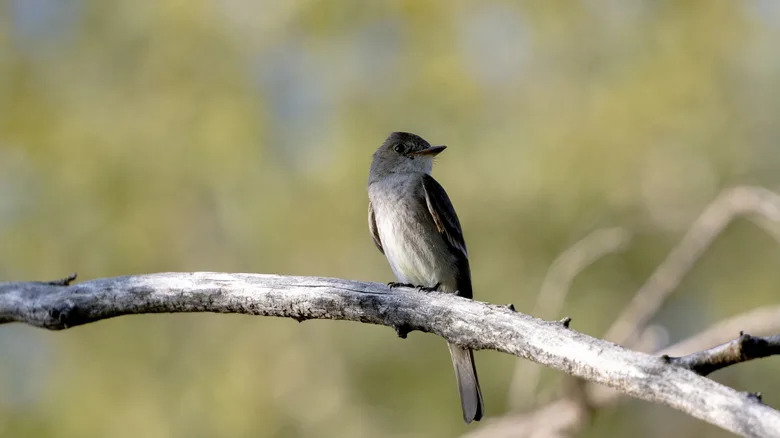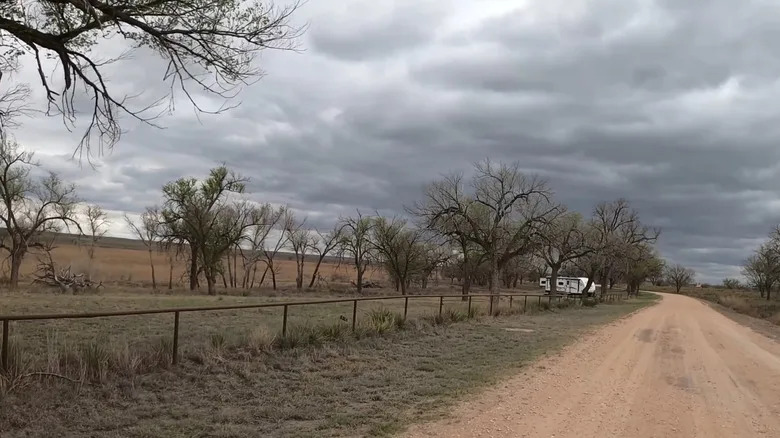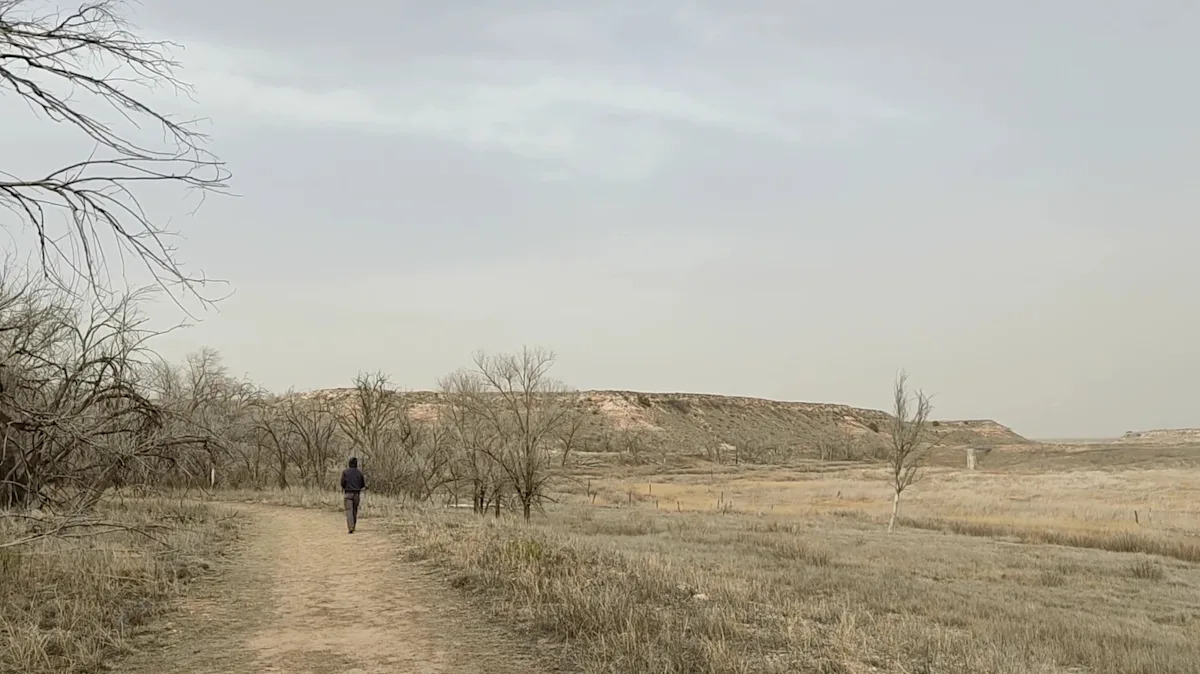You might know Amarillo, Texas, as one of the most underrated stops on Route 66, but this area has more to offer than vintage Americana, oddities, and charm. Around half an hour outside the city along I-27 S and U.S 60 Hwy, you’ll find a wide open landscape of prairie grasses waving in the wind. This is Buffalo Lake National Wildlife Refuge, more than 7,600 acres of almost wild land in the Texas Panhandle.
There is no actual lake here, just a dry lakebed, but the ecosystem you’ll find here is a lot rarer than a real lake. This is one of North America’s last prairies. The landscape, with its loose rocky slopes and flat grasslands that are primarily shades of tan and beige, punctuated occasionally by darker trees, might appear somewhat desolate at first glance. However, for some species, this place is a safe haven during long journeys. For many more, it’s home.
While it might feel like you’re alone while you are hiking the trails or camping under its wide open Texas skies, you’ll be surrounded by living creatures. In particular, this is one of the best places for bird watchers to explore in the Lone Star State. Under your feet, there can be prairie dogs and burrowing owls digging their tunnels. On the ground, you might catch a glimpse of a prehistoric-looking horned lizard scuttling away. From the tallest tree tops, the orange eyes of a Cooper’s hawk might scan the landscape for its next meal. High overhead, spot the mighty six-foot wingspan of a Golden Eagle across the dry winter prairie.
Read more: The Best Vacation Destinations Where The US Dollar Goes Furthest
Wildlife abound in Buffalo Lake National Wildlife Refuge
A bird perched in Buffalo Lake National Wildlife Refuge – PathsAndPotholes/Shutterstock
The Buffalo Lake National Wildlife Refuge is open all year long, but different seasons provide different opportunities on the prairie. If you are traveling to the refuge because it’s one of the best birdwatching destinations in Texas, you should decide which species you would most like to see. Hundreds of migrating birds pass through the refuge in spring, summer, and fall, but in fall and winter, you have the best shot at seeing a golden eagle soaring overhead or witnessing a bald eagle in the wild. Try to hit the trails in the mornings and evenings for the best shot at seeing animals.
Whenever you go, consider choosing the Cottonwood Canyon Birding Trail first to go birdwatching and then checking out the easy Prairie Dog Town Trail to see these adorable creatures pop their heads up out of the ground. You may also want to consider the refuge’s auto tour. While you might not feel as connected to nature behind the wheel instead of on the trail, if you park your car and wait in a good spot, the animals are more likely to emerge, since they can’t see you.
Animal lovers should be aware that limited hunting of a select few species is allowed within the refuge on specific weekends between September and January, as well as some select weekdays during that time, which can be found on the Texas Parks and Rec website. If you would prefer not to be there at the same time as the hunting, you might be better off picking a spring or summer date for your trip.
Enjoy budget-friendly camping in Buffalo Lake National Wildlife Refuge
An RV in the designated camping area in Buffalo Lake National Wildlife Refuge – The Wandering Shores / YouTube
A lot of national wildlife refuges don’t allow camping, but if you want to spend the night at Buffalo Lake, it is possible. In fact, this might just be one of the best lesser-known RV destinations if you want to avoid crowds and enjoy nature in peace. You’ll have to head to the refuge’s designated camping and picnic area and snag one of its 17 campsites. There aren’t any reservations here, but it’s not usually too busy. If you are able to secure one for yourself, you’re allowed to stay for up to a week.
Just be aware that you won’t be able to explore the prairie outside of the refuge’s normal hours just because you’re spending the night. You’re expected to stay in the camping area after closing (between 4:30 p.m. and 8 p.m., depending on the season). While you’re free to leave at any time, the gate automatically locks when you leave, so you won’t be able to get back in if you realize you forgot marshmallows at 11 p.m. and try to make a late-night snack run.
There is one sight in the refuge that you won’t want to miss when you’re camping, however, and you won’t have to leave the campground to see it: the night sky. Although it is reasonably close to Amarillo, there is a lot less light pollution within the refuge than in a lot of places in Texas, making this one of the best spots for stargazing.
Ready to discover more hidden gems and expert travel tips? Subscribe to our free newsletter and add us as a preferred search source for access to the world’s best-kept travel secrets.
Read the original article on Islands.

